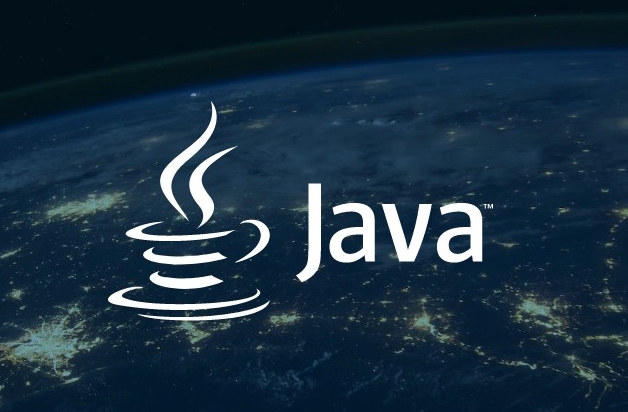Java链式队列实现与使用技巧
时间:2025-08-16 21:20:49 293浏览 收藏
学习知识要善于思考,思考,再思考!今天golang学习网小编就给大家带来《Java链式队列实现与应用技巧解析》,以下内容主要包含等知识点,如果你正在学习或准备学习文章,就都不要错过本文啦~让我们一起来看看吧,能帮助到你就更好了!
链式队列通过链表实现FIFO,适合大小不确定的场景,而数组队列适用于容量固定且追求高性能的情况;实际应用包括任务调度、消息队列和多线程下载器;需注意空指针、内存泄漏和线程安全问题,多线程下推荐使用ConcurrentLinkedQueue保证安全。

用链表实现链式队列,关键在于利用链表的特性来模拟队列的先进先出(FIFO)原则。简单来说,就是用链表的节点来存储队列中的元素,并维护一个指向队头和队尾的指针。
解决方案
public class LinkedQueue<T> {
private static class Node<T> {
T data;
Node<T> next;
Node(T data) {
this.data = data;
this.next = null;
}
}
private Node<T> head; // 队头
private Node<T> tail; // 队尾
private int size;
public LinkedQueue() {
head = null;
tail = null;
size = 0;
}
public boolean isEmpty() {
return head == null; // 或者 size == 0;
}
public int size() {
return size;
}
public void enqueue(T data) {
Node<T> newNode = new Node<>(data);
if (isEmpty()) {
head = newNode;
tail = newNode;
} else {
tail.next = newNode;
tail = newNode;
}
size++;
}
public T dequeue() {
if (isEmpty()) {
return null; // 或者抛出异常,根据实际情况选择
}
T data = head.data;
head = head.next;
if (head == null) {
tail = null; // 队列为空时,tail也要置空
}
size--;
return data;
}
public T peek() {
if (isEmpty()) {
return null; // 或者抛出异常
}
return head.data;
}
public static void main(String[] args) {
LinkedQueue<Integer> queue = new LinkedQueue<>();
queue.enqueue(1);
queue.enqueue(2);
queue.enqueue(3);
System.out.println("Queue size: " + queue.size()); // Output: Queue size: 3
System.out.println("Dequeue: " + queue.dequeue()); // Output: Dequeue: 1
System.out.println("Peek: " + queue.peek()); // Output: Peek: 2
System.out.println("Queue size: " + queue.size()); // Output: Queue size: 2
}
}链式队列和数组队列,我该选哪个?
数组队列通常在你知道队列的最大容量,并且需要高性能的场景下更合适。因为数组在内存中是连续存储的,访问速度快。但数组队列的缺点是大小固定,容易出现空间浪费或溢出的情况。
链式队列则更灵活,可以动态地增加或减少队列的大小,不需要预先知道队列的最大容量。但是,链式队列的内存占用比数组队列略高,因为每个节点都需要额外的空间来存储指针。 选择哪个,还是得看你的具体需求。如果对内存使用非常敏感,且队列大小可预测,数组队列可能更好。如果队列大小不确定,或者对内存占用不是特别敏感,链式队列会更方便。
链式队列在实际开发中有什么用?
链式队列在很多场景下都有应用,比如:
- 任务调度: 在操作系统中,可以使用链式队列来管理等待执行的任务。
- 消息队列: 在分布式系统中,可以使用链式队列来实现消息队列,用于异步地传递消息。
- 缓冲: 在网络编程中,可以使用链式队列来缓冲数据,防止数据丢失。
举个实际的例子,假设你正在开发一个多线程下载器。你可以使用链式队列来管理下载任务。每个下载任务就是一个节点,当一个线程完成一个下载任务后,就从队列中取出一个新的任务来执行。 这样做的好处是,可以充分利用多线程的优势,提高下载速度。
使用链式队列时,需要注意哪些问题?
- 空指针异常: 在出队操作时,需要判断队列是否为空,避免空指针异常。
- 内存泄漏: 如果链式队列使用不当,可能会导致内存泄漏。例如,如果出队后没有将节点从内存中释放,就会造成内存泄漏。
- 线程安全: 如果多个线程同时访问链式队列,需要考虑线程安全问题。可以使用锁或其他同步机制来保证线程安全。
关于线程安全,我再多说两句。如果你的链式队列需要在多线程环境下使用,那么你需要采取一些措施来保证线程安全。 一种常见的做法是使用synchronized关键字来同步对队列的操作。 另一种做法是使用java.util.concurrent包中的线程安全队列,例如ConcurrentLinkedQueue。 至于选择哪种方式,取决于你的具体需求和性能要求。 如果对性能要求比较高,可以考虑使用ConcurrentLinkedQueue,因为它使用了无锁算法,可以减少线程之间的竞争。
import java.util.concurrent.ConcurrentLinkedQueue;
public class ThreadSafeLinkedQueue<T> {
private ConcurrentLinkedQueue<T> queue = new ConcurrentLinkedQueue<>();
public void enqueue(T data) {
queue.offer(data);
}
public T dequeue() {
return queue.poll();
}
public boolean isEmpty() {
return queue.isEmpty();
}
public static void main(String[] args) throws InterruptedException {
ThreadSafeLinkedQueue<Integer> queue = new ThreadSafeLinkedQueue<>();
// 多个线程向队列中添加元素
Thread producer1 = new Thread(() -> {
for (int i = 0; i < 10; i++) {
queue.enqueue(i);
System.out.println("Producer 1 enqueue: " + i);
try {
Thread.sleep(100); // 模拟生产过程
} catch (InterruptedException e) {
e.printStackTrace();
}
}
});
Thread producer2 = new Thread(() -> {
for (int i = 10; i < 20; i++) {
queue.enqueue(i);
System.out.println("Producer 2 enqueue: " + i);
try {
Thread.sleep(150); // 模拟生产过程
} catch (InterruptedException e) {
e.printStackTrace();
}
}
});
// 单个线程从队列中取出元素
Thread consumer = new Thread(() -> {
while (!queue.isEmpty() || producer1.isAlive() || producer2.isAlive()) {
Integer data = queue.dequeue();
if (data != null) {
System.out.println("Consumer dequeue: " + data);
}
try {
Thread.sleep(200); // 模拟消费过程
} catch (InterruptedException e) {
e.printStackTrace();
}
}
System.out.println("Consumer finished.");
});
producer1.start();
producer2.start();
consumer.start();
producer1.join();
producer2.join();
consumer.join();
System.out.println("Main thread finished.");
}
}终于介绍完啦!小伙伴们,这篇关于《Java链式队列实现与使用技巧》的介绍应该让你收获多多了吧!欢迎大家收藏或分享给更多需要学习的朋友吧~golang学习网公众号也会发布文章相关知识,快来关注吧!
-
501 收藏
-
501 收藏
-
501 收藏
-
501 收藏
-
501 收藏
-
164 收藏
-
341 收藏
-
125 收藏
-
427 收藏
-
152 收藏
-
129 收藏
-
334 收藏
-
431 收藏
-
294 收藏
-
292 收藏
-
183 收藏
-
288 收藏
-

- 前端进阶之JavaScript设计模式
- 设计模式是开发人员在软件开发过程中面临一般问题时的解决方案,代表了最佳的实践。本课程的主打内容包括JS常见设计模式以及具体应用场景,打造一站式知识长龙服务,适合有JS基础的同学学习。
- 立即学习 543次学习
-

- GO语言核心编程课程
- 本课程采用真实案例,全面具体可落地,从理论到实践,一步一步将GO核心编程技术、编程思想、底层实现融会贯通,使学习者贴近时代脉搏,做IT互联网时代的弄潮儿。
- 立即学习 516次学习
-

- 简单聊聊mysql8与网络通信
- 如有问题加微信:Le-studyg;在课程中,我们将首先介绍MySQL8的新特性,包括性能优化、安全增强、新数据类型等,帮助学生快速熟悉MySQL8的最新功能。接着,我们将深入解析MySQL的网络通信机制,包括协议、连接管理、数据传输等,让
- 立即学习 500次学习
-

- JavaScript正则表达式基础与实战
- 在任何一门编程语言中,正则表达式,都是一项重要的知识,它提供了高效的字符串匹配与捕获机制,可以极大的简化程序设计。
- 立即学习 487次学习
-

- 从零制作响应式网站—Grid布局
- 本系列教程将展示从零制作一个假想的网络科技公司官网,分为导航,轮播,关于我们,成功案例,服务流程,团队介绍,数据部分,公司动态,底部信息等内容区块。网站整体采用CSSGrid布局,支持响应式,有流畅过渡和展现动画。
- 立即学习 485次学习
